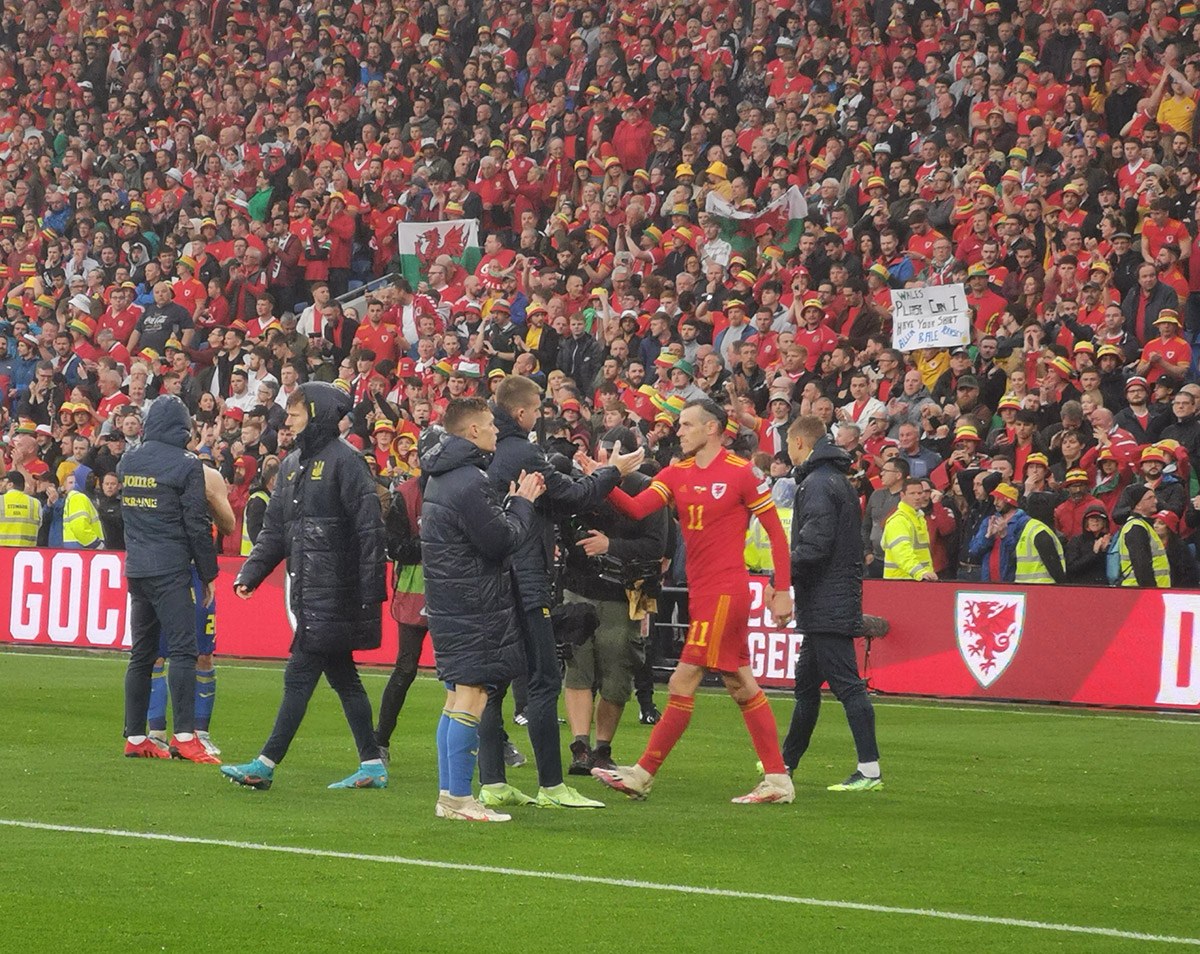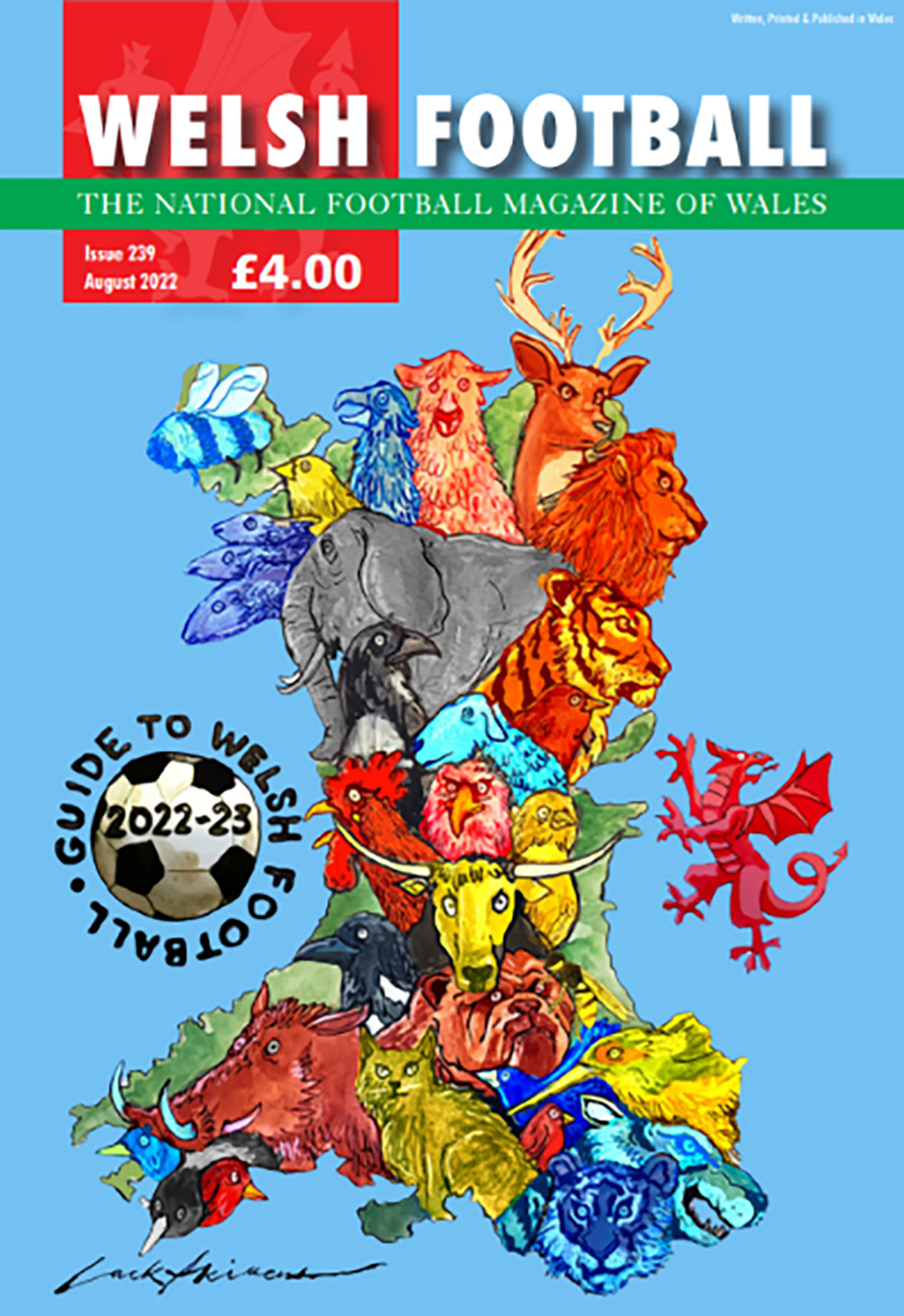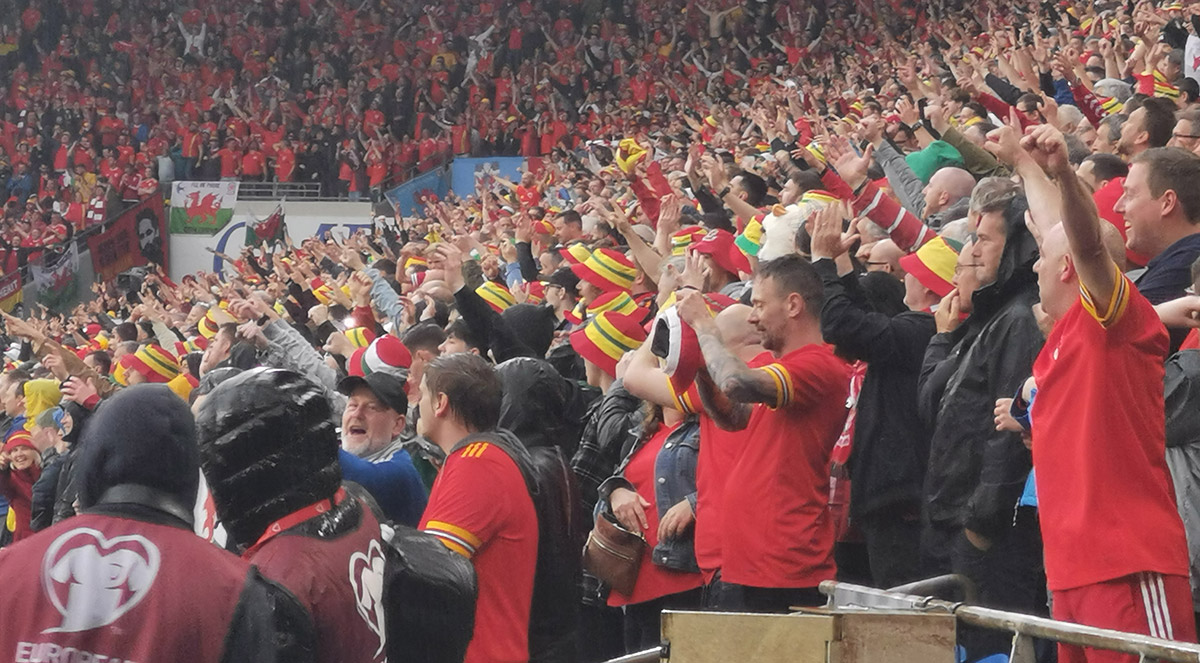Yma O Hyd: The History of Welsh Football
David Collins takes us on the 146-year history of Welsh football, from its early days in the north east of Wales, through Cardiff, to the forthcoming World Cup tournament in Qatar
The appearance of the Wales national football team in this winter’s FIFA World Cup finals tournament in Qatar is the crowning glory in a successful decade that has surpassed the hopes of even the most ardent fans.
Although our only previous appearance in a World Cup finals, 64 years ago in Sweden 1958, has taken on legendary status in fan culture, it went relatively unnoticed back home at the time. This time, the presence of Wales in the world’s biggest sporting event will be seen around the globe.
Football in Wales has a long, and mixed, 146 year history. The Football Association of Wales (FAW) is the third-oldest in the world, its foundation in 1876 coming soon after the creation of English and Scottish versions. The first international match was played, against Scotland, in Glasgow on 25th March 1876, the players drawn from early pioneering clubs in north Wales and England.
Indeed, as organised association football began to grow at the end of the nineteenth century, it was dominated by the early clubs of the north-east, like Druids of Ruabon, Wrexham and Chirk. The FAW created a Welsh Cup competition in 1877, but no south Wales club even entered it until 1892. That was Cardiff FC – but not the club we know today as the Bluebirds, who weren’t formed until 1899.
In fact, football’s origins in Cardiff can be traced to the 1880s: early reports mention a team formed by the clergy of St. Margaret’s Church, Roath, based at Roath Court. By 1890, a St. Margaret’s football team accompanied Cardiff rugby club on a trip to Gloucester. Later that year a number of enthusiasts, including leading St. Margaret’s players, formed a new club to be called ‘Cardiff FC’.
That early Cardiff FC played initially at Tyn-y-Coed Farm (off Albany Road), changing in the Royal George Hotel. In 1892 they moved to a more central ground, St. Andrew’s Park, North Road (where Queen Anne Square is today). They enjoyed considerable success in local south Wales football, winning league and cup honours and by 1895 were sufficiently emboldened to enter an English league, moving to another new ground in Grangetown (Gripoly Mills). But the journeys to fulfil away fixtures around Bristol in the Western League proved challenging and Cardiff were expelled by February 1896, their star already waning.
International football finally came to Cardiff in 1896 – Wales v England on 16th March 1896 at Cardiff Arms Park, with Wales’s first football superstar Billy Meredith in the home side. The same year also saw the emergence of another famous Cardiff club, Cardiff Corinthians, now the city’s oldest surviving club. The Corries even became the first Welsh side to be invited to play abroad, visiting Barcelona in 1910.
Three years after the Corries were formed by local cricketers, members of Riverside cricket club also decided to form a football team to keep their players together over the winter months: the result was Riverside AFC, which was to become Cardiff City in 1908.
Fifteen years after Cardiff FC’s first ignominious sortie into English football, Cardiff City followed suit in 1910, after securing a new ground at Ninian Park. After being accepted by the Southern League, they led the way as south Wales football finally caught up with the north in the years before the Great War, becoming the first to bring the prestigious Welsh Cup south, in 1912.
At this time, international fixtures for Wales were confined to three opponents: England, Scotland, and Ireland in the ‘British Home Championship’, which Wales won for the first time in 1907, with a couple more successes in the years following the war. But it was club football which really captured the imagination of south Wales fans in the 1920s, as Cardiff City made a huge impact in English football: elected to the Football League in 1920, City were in Division One a year later, missed out on the league title by a goal average of 0.024 in 1924, then reached the FA Cup final at Wembley in 1924 and 1927, winning the cup on their second visit.
The Wales national team’s first real spell of success came in the 1930s: four Home Championships were won between 1933 and 1939, although many of the players of that era are unfamiliar today. One who does stand out is Jimmy Murphy, although he’s best remembered as a Wales manager.
After World War 2, Wales began playing European opposition more frequently, undertaking a first overseas tour in 1949 and entering the FIFA World Cup for the first time. They failed to qualify for the 1950 and 1954 tournaments (the Home Championship was used as a qualifying group).
Wales seemed to have missed out again on the 1958 World Cup tournament, finishing second in a qualifying group, but enjoyed a stroke of luck when they were drawn from all runners-up to contest a play-off with Israel to fill a late vacancy in the finals in Sweden. Now managed by Jimmy Murphy, Wales won both games 2-0 and took their place in Sweden, reaching the quarter-finals where they were narrowly defeated by Brazil, the winning goal coming from a then-unknown teenager called Pele.
Although Cardiff City provided five of Jimmy Murphy’s 1958 World Cup squad, there were only three locally-born members, and the stars of that era were most definitely from Swansea: John and Mel Charles, Cliff Jones and Ivor Allchurch.
The national team’s fortunes declined after that, as the golden generation retired, and it was the thriving club football scene that sustained fans through the sixties, seventies and eighties. Cardiff City reached the English First Division again in 1952, staying there for five seasons, and winning promotion again in 1960.
In the early post-war years, senior football was being played in Rhiwbina, as Cardiff Corries had made their home at Corinthian Park, Heol Caerhys. But housing swallowed up that venue and the Corries moved on to Maindy, then Llanishen, Canton and finally Radyr.
If Wales weren’t enjoying success internationally, there was the compensation of frequent European action for Cardiff City in the European Cup Winners’ Cup, for which City regularly qualified by winning the Welsh Cup. Between 1964 and 1994, the Bluebirds enjoyed 14 such adventures, the highlights being in 1967-68, when they reached the semi-finals and 1970-71, when they only went out in the quarter-finals to Real Madrid. In more recent times, Inter Cardiff and Cardiff Met University have represented the city in European competitions.

But after decades of disappointment, it’s the national team that is now inspiring levels of national pride that seemed unimaginable a decade ago. Just qualifying for a major tournament (Euro 2016) seemed like the Holy Grail, but that has now been repeated with Euro 2020 and now the Qatar World Cup. And a north Cardiff boy, Gareth Bale from Whitchurch, has been at the forefront of this golden generation, along with Fairwater’s Joe Ledley and Aaron Ramsey from Caerphilly, while another Cardiff boy, Ben Cabango, is now becoming a Wales regular.
Football in Wales has never enjoyed such a high profile, after years of being eclipsed by rugby union, and, unlike 1958, we can be sure the appearance of ‘Cymru’ on the world stage won’t go under the radar.
About The Author
Rhiwbina resident David Collins is the editor and publisher of ‘Welsh Football’ magazine and associated titles, including an annual ‘Guide to Welsh Football’, a booklet ‘A Capital Season’ that celebrated the successes of local Cardiff clubs in 2021-22, and most recently the ‘Football Gazetteer of Wales 2022’.
Further information on all David’s publications can be found at www.welsh-football.net


